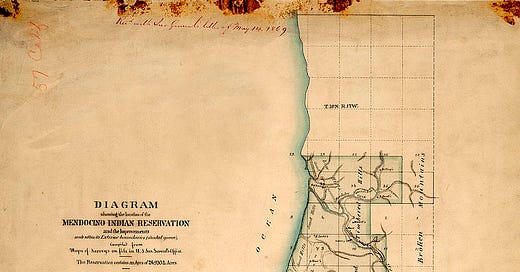On Friday, Gov. Gavin Newsom signed a bill that makes California among the first in the nation to list ethnic studies as a graduation requirement for all public high school students. The Curriculum will include Black people, Latinos, Native Americans and Asian Americans— ethnic and racial groups whose history and stories have been traditionally passed over. California high school students will have to take a course in ethnic studies to be awarded a diploma starting in 2029-30.
President Biden has been the first President to proclaim October 11, 2021, as Indigenous Peoples’ Day. https://www.whitehouse.gov/briefing-room/presidential-actions/2021/10/08/a-proclamation-indigenous-peoples-day-2021/
History has been whitewashed and the internet now presents opportunities to learn about the truths that have been brushed away. History is finally being re-written to include what happened to the Native peoples and their lands. Their voices and their history require our attention.
Today as we honor Indigenous People’s Day, I took some time to learn more about the land where native peoples lived here in California way long before Europeans arrived. I was raised on the East Coast of the U.S. and do remember learning about our indigenous tribes there. The Lenni-Lenape (or simply “Lenape”) are the ancient root of many other American Indian nations. The Lenape homeland included all of New Jersey, northern Delaware, eastern Pennsylvania, and southeastern New York. The Nanticoke are the people of the Delmarva between the Chesapeake and Delaware Bays. The name Leni-Lenape has a variety of translations: "original people", "real people" and "common people". The peace loving Lenni-Lenape are called the “grandfathers” or “ancient ones” by many other tribes and are among the most ancient of the Northeastern Nations.
Mendocino County where I now reside, was and still is home to the Pomo people. In 1856, the Bureau of Indian Affairs established the Mendocino Indian Reservation at Noyo. In 1857 a military post was established on the reservation and named Fort Bragg. The post was abandoned in 1864, the reservation was discontinued in 1868.
The Yuki, (Ukiah or Yokiah), Wappo, Pomo, Salan Pomo, Southern Pomo (Kianamaras or Gallinomero), Whilkut (Redwood) and others were forced to live on this reservation. The historical Pomo territory in Northern California was huge, bordered by the Pacific Coast to the west, extending inland to Clear Lake, and mainly between Cleone and Duncans Point.

In Fort Bragg, California, interpretive panels along the Noyo Coastal & Ka Kahleh Trail explain the story of the persecution of the native people and their confinement to the Mendocino Indian Reservation. The name Ka Kahleh comes from the Pomo language, meaning "White Water.” The panels were created in collaboration with the Sherwood Valley Band of Pomo. Sherwood Valley Rancheria is the successor in interest to ownership of the Mendocino Indian Reservation, established by Act of Congress on March 3, 1853.
Back in 2019 the Mendocino County Board of Supervisors officially proclaimed the second Monday in October as Indigenous Peoples’ Day. The Fort Bragg City Council in 2020 City Council adopted a resolution renaming the second Monday in October from Columbus Day to Indigenous Peoples’ Day
The California Native American Heritage Commission lists the following Pomo groups based in Sonoma, Lake, and Mendocino counties presently recognized by the United States federal government.
Elem Indian Colony of Pomo Indians of the Sulphur Bank Rancheria
Federated Indians of Graton Rancheria (a tribe of Coast Miwok and Southern Pomo)
Round Valley Indian Tribes of the Round Valley Reservation (a confederation of several tribes, including Pomo)
I found the following interesting reference to property ownership and how European attitudes disrupted the status quo.
“There’s a myth that Europeans arrived in the Americas and divided the land up, mystifying Native Americans who had no concept of property rights…Native and colonial conceptions of property clashed, it was sometimes in the form of Europeans imposing their ideas of common land on territory that was already owned. Colonists often allowed their livestock to roam freely, disrupting the forest ecosystems and ownership systems that provided a livelihood for local people. As a Maryland Native leader named Mattagund explained to colonial authorities, ‘Your cattle and hogs injure us. You come too near to us to live and drive us from place to place.’ When individual private property did finally become the norm across the Americas, it was through the destruction of prior systems of property rights.” (Read more at https://daily.jstor.org/yes-americans-owned-land-before-columbus/)
LANDBACK campaign is a program worth looking into. It is a mutli-faceted campaign to get Indigenous lands back into Indigenous hands and empower Indigenous people across Turtle Island with the tools and strategies to do LANDBACK work in their own communities.
The Shuumi Land Tax is a voluntary annual contribution that non-Indigenous people living on the Confederated Villages of Lisjan’s territory can make to support the critical work of the Sogorea Te’ Land Trust.
Just a few of many Resources:
Indigenous Peoples of California: Related Resources at The Bancroft Library https://guides.lib.berkeley.edu/IndigenousCABancroft
The Zinn Education Project promotes and supports the teaching of people’s history in classrooms across the country.
The National Museum of the American Indian operates three facilities. The museum on the National Mall in Washington, D.C., offers exhibition galleries and spaces for performances, lectures and symposia, research, and education. The George Gustav Heye Center (GGHC) in New York City houses exhibitions, research, educational activities, and performing arts programs. The Cultural Resources Center (CRC) in Suitland, Maryland, houses the museum's collections as well as the conservation, repatriation, and digital imaging programs, and research facilities. The NMAI's off-site outreach efforts, often referred to as the "fourth museum," include websites, traveling exhibitions, and community programs.
First Americans Museum (FAM) officially opened its doors to the public in September. Visitors can experience the collective histories of thirty-nine distinctive First American Nations in Oklahoma today.




